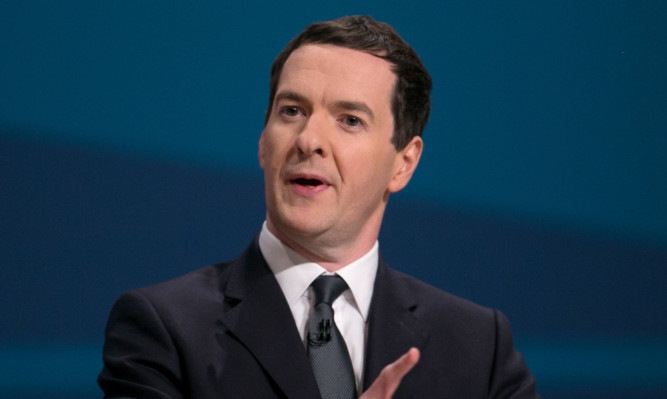Chancellor George Osborne was dealt a blow ahead of today’s Autumn Statement as experts predict he is facing a £30 billion black hole in Britain’s public finances by the next election.
The Centre for Economics and Business Research (Cebr) said not only will he narrowly miss this year’s deficit target of £69.5 billion, but Mr Osborne will also fail in his goal to return the UK to a surplus in 2020.
Weaker-than-predicted growth will in fact mean that the UK remains in the red by £20.8 billion in 2020, instead of the Office for Budget Responsibility’s forecast in July for a £10 billion surplus, according to the Cebr.
And it believes the deficit will remain at £18.4 billion in 2021, rather than the £11.6 billion surplus predicted in July – effectively leaving Mr Osborne with a £30 billion gap in the finances.
The Cebr said: “Because the Chancellor’s forecasts rely on an implausibly high rate of growth we think that the Government’s fiscal position is much less favourable than was set out in the July Budget.
“The deficit will not be eliminated in the current Parliament.”
It is predicting a more gloomy path for Britain’s economy over the next six years, forecasting that gross domestic product (GDP) will slow after 2015, from 2.6% to as low as 1.6% in 2018.
This is more pessimistic than the Office for Budget Responsibility (OBR) forecasts announced at the time of the Summer Budget in July, when it pencilled in growth of 2.4% in 2017 and remaining at that level until 2020.
The Cebr added: “As the economy slows after this year, the Chancellor will be forced to adjust his borrowing targets, cut spending by more or raise taxes – or some combination of the three. What he chooses is up to him.”
Experts widely believe the borrowing targets will be scaled back in today’s Autumn Statement, particularly after grim official figures on Friday showed borrowing increased to £8.2 billion last month – the worst deficit for any October since 2009.
The Office for National Statistics data showed public sector net borrowing excluding banks was £1.1 billion higher than in October last year.
So far in the financial year overall, public borrowing between April and October stood at £54.3 billion, which is £6.6 billion lower when compared with the same period last year.
But experts believe it will be an uphill struggle to keep borrowing within the £69.5 billion target for the full-year.
The Chancellor could look to reduce borrowing, in the short term at least, by selling off certain state-owned assets.
Reports last week claimed Mr Osborne had already revived plans to privatise the £1.2 billion Land Registry.
New analysis by the Press Association showed the registry made a profit of £136 million in the 2013/14 financial year, so would likely prove attractive to buyers.
There are over a dozen state assets either wholly or part-owned by the Government that the Chancellor could sell if he so chose.
These include the map business Ordnance Survey, which made a profit of £28 million in 2013/14, and the Met Office, which added £11 million to public coffers.
He could also choose to privatise the Royal Mint or Companies House, both of which reported a £7 million profit.
The potential sale of Channel 4 would reportedly raise as much as £1 billion for the Government. Unlike the BBC, the broadcaster makes most of its revenue through advertising, generating a modest £4 million surplus in 2014, according to the Press Association.
